From Stalin’s megalomanic Palace of the Soviets to an aerodynamically shaped headquarters for the Soviet airline Aeroflot, visit the Moscow that never was.
Postcard predictions
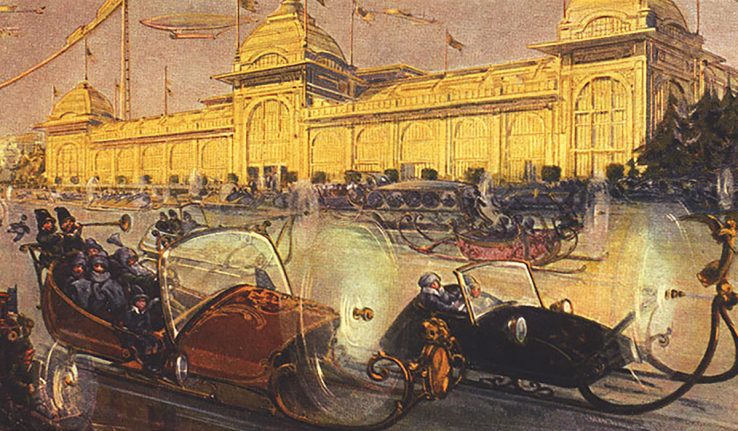

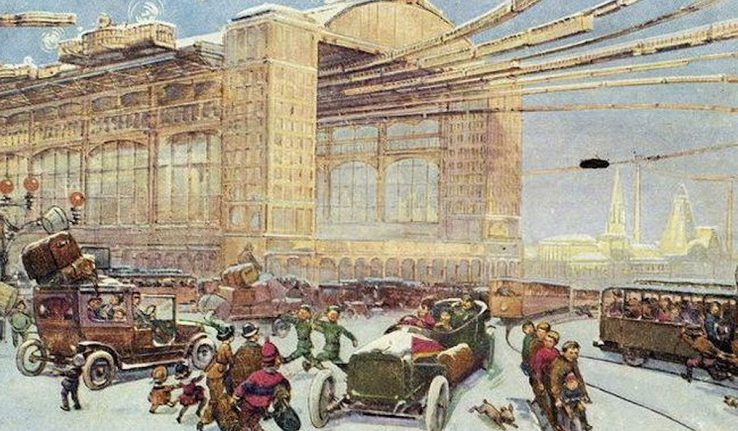
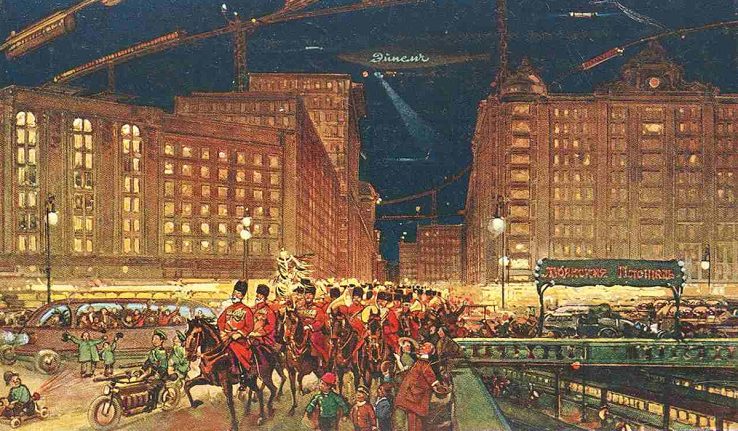
Before visiting the Soviet era, let’s take a look at how Russians under the tsar imagined the future of their largest city.
These postcards were published around the turn of the last century. Like many predictions of the time, they extrapolate contemporary developments into the far future. So we see a Moscow where soldiers on horseback share the streets with streamlined autobuses and the city’s bourgeoise glide underneath zeppelin-filled skies in horseless sleighs.
New Moscow
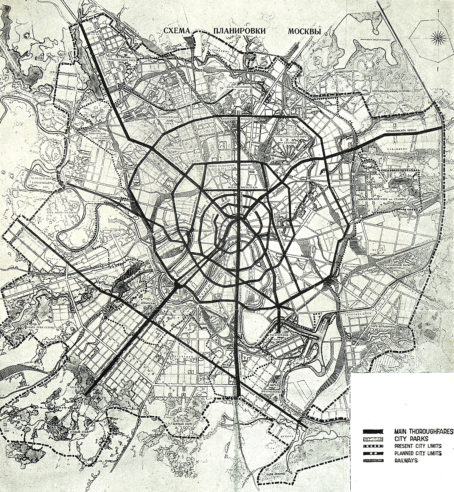
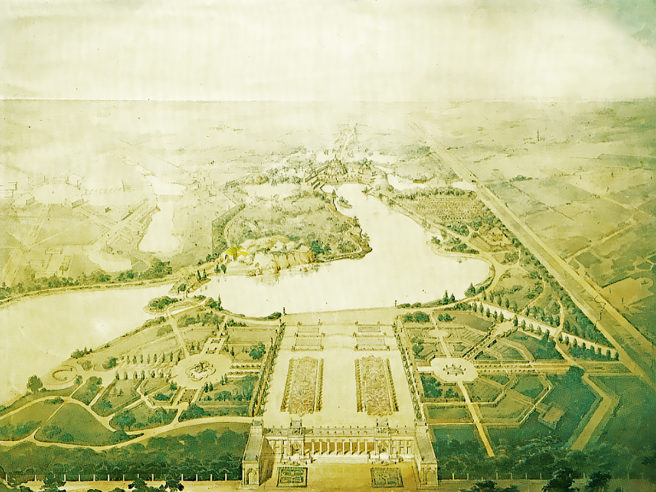
Our next stop is the 1930s, when Joseph Stalin’s Communist Party proposed a massive expansion and renovation of Moscow. (Adolf Hitler wasn’t the only midcentury dictator with grandiose architectural visions.) The 1935 General Plan for Reconstruction called for doubling the city’s size and building sixteen highways, several monuments and fifteen million square meters of new housing for an additional 1.5 million residents. The city was to be surrounded by a ten kilometer-wide greenbelt.
Parts of the plan came to fruition, and involved tearing down such historic buildings as Peter the Great’s Sukhareva Tower and the Cathedral of Christ the Savior. The Second World War prevented it from being implemented wholescale.
Sukharev Tower
Much like Hitler had no qualms about destroying entire cities to make way for his vision of a new Germany, the Soviet communists had little regard for history in the realization of their masterplan. Sukhareva Tower, built by Peter the Great in 1692-1701, and an icon of the Moscow Baroque style, was deemed to block traffic and therefore had to go.
Artists and architects appealed to Stalin to reverse the decision, suggesting that traffic could pass around and even underneath the tower. Their appeals fell on deaf ears. The tower was demolished in 1934.
Palace of the Soviets
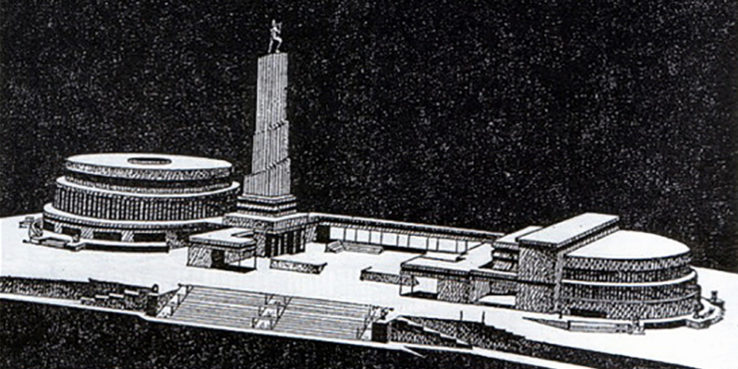
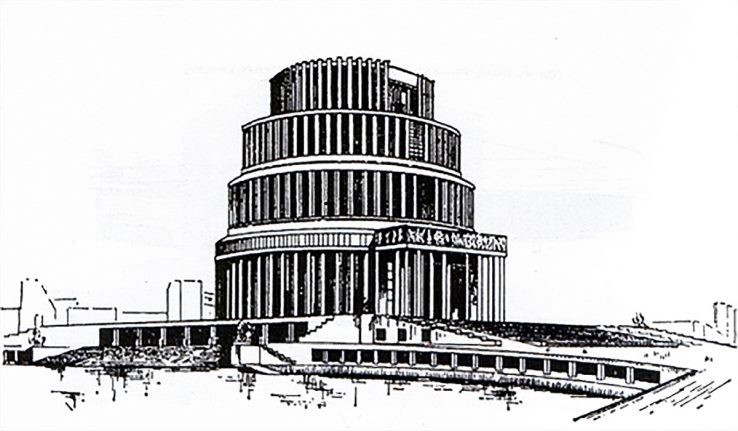

The centerpiece of the 1935 General Plan was a new headquarters for the Supreme Soviet of the USSR on the site of the bulldozed Cathedral of Christ the Savior (rebuilt in the late 1990s).
An architectural competition was held, won by Boris Iofan, who submitted a neoclassical skyscraper concept. The building would have been the tallest in the world at the time.

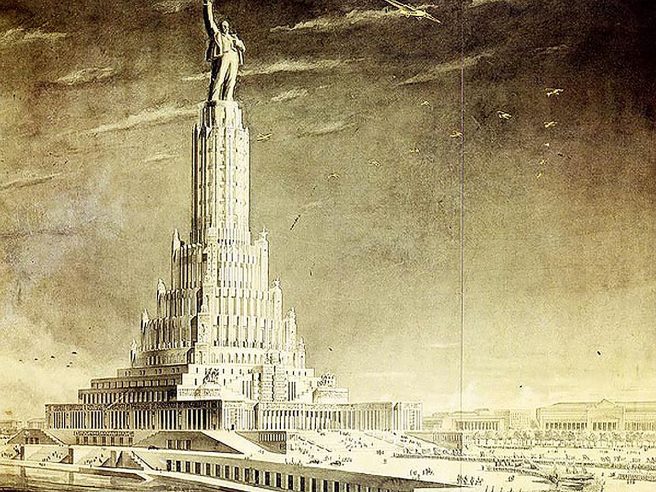
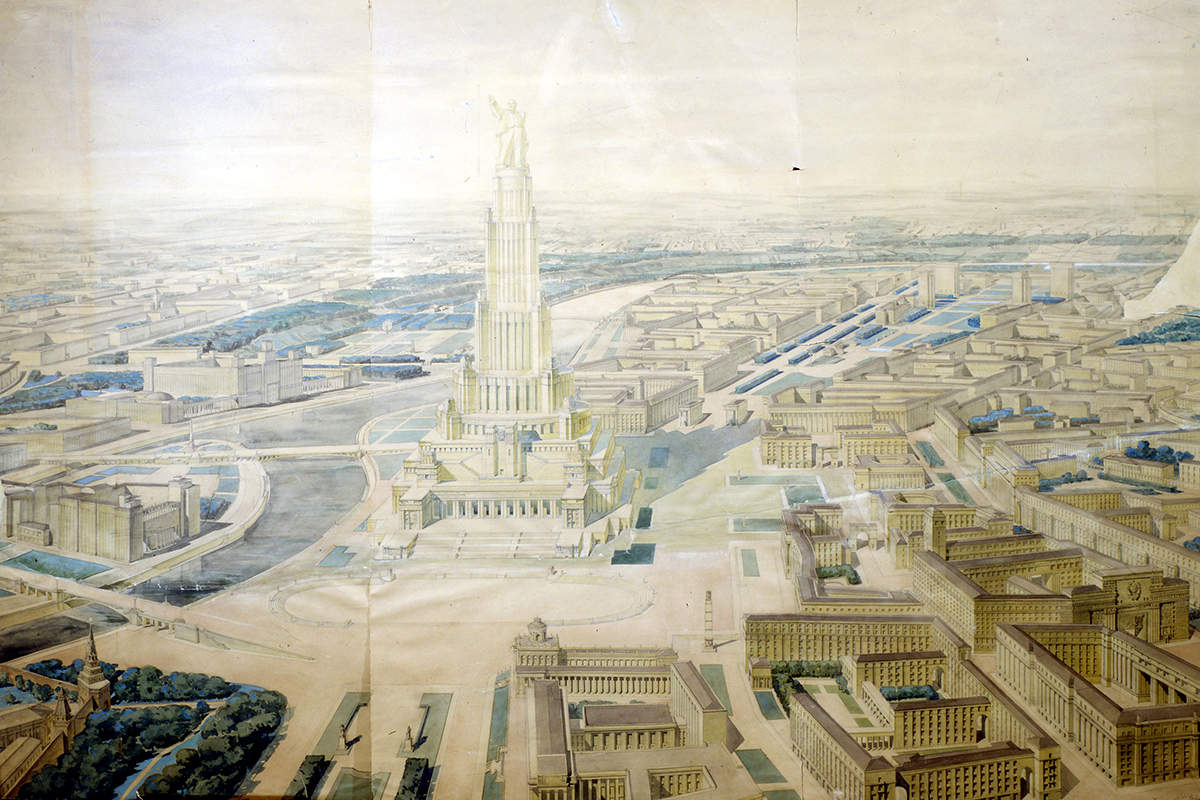
Two neoclassicist architects, Vladimir Gelfreikh and Vladimir Shchuko, were assigned to Iofan’s team to revise the design in accordance with Stalin’s wishes: to make the building at least as tall as the Eiffel Tower and add a large statue of his predecessor, Vladimir Lenin, on top.
This raised the total height from 260 to 415 meters. The main congress hall would have been 100 meters high and capable of seating 21,000 delegates from all over the Soviet Union.
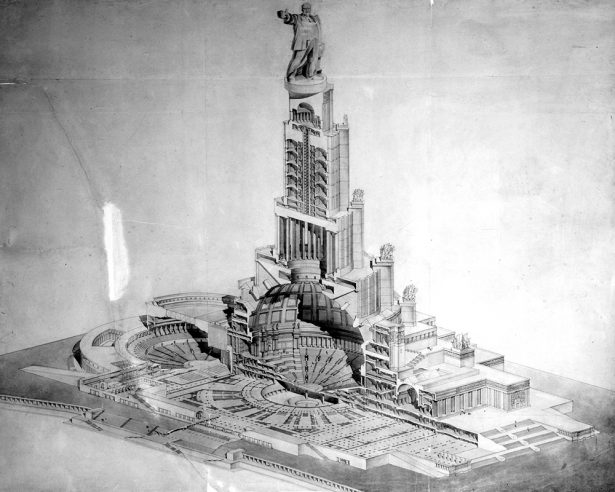
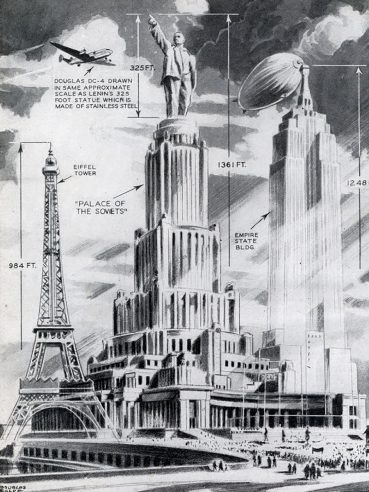
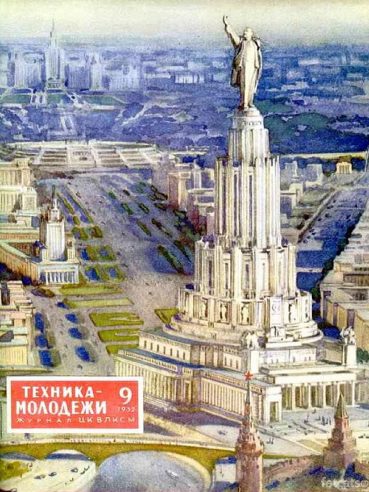

Construction started in 1939 but was aborted when the Nazis invaded two years later. After the war, the foundations were cleared of rubble and converted into an open-air swimming pool.
Designs that didn’t win

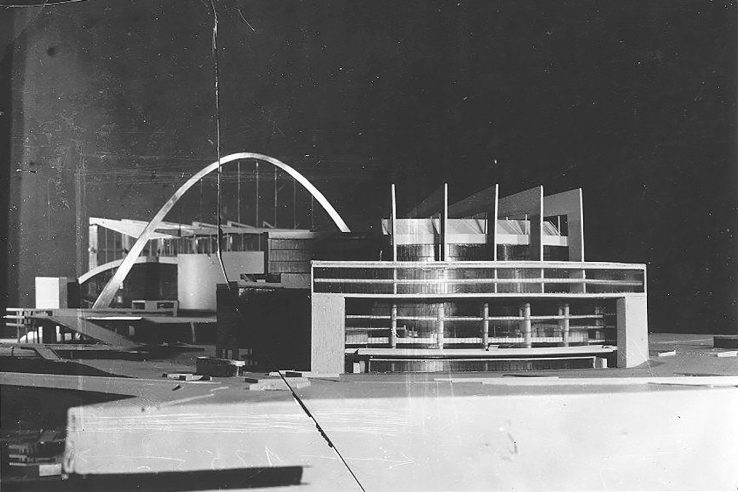
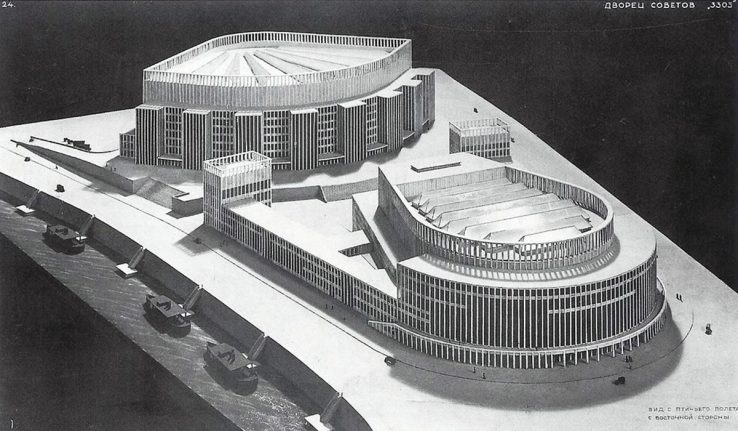
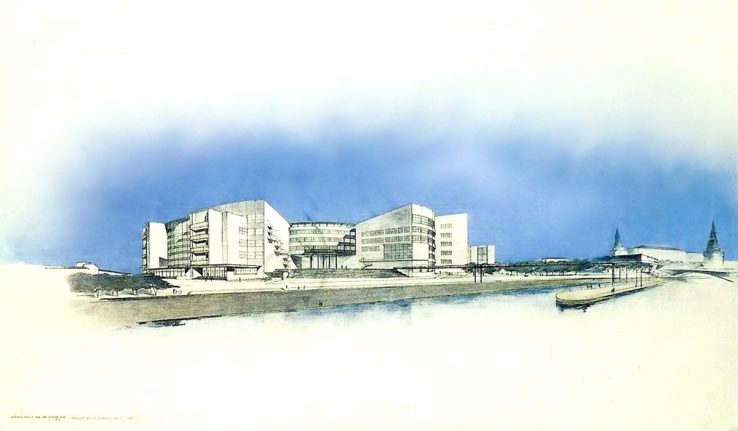
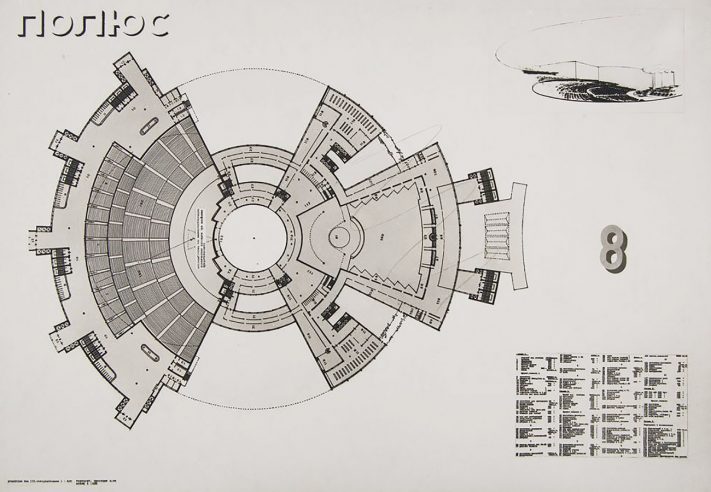
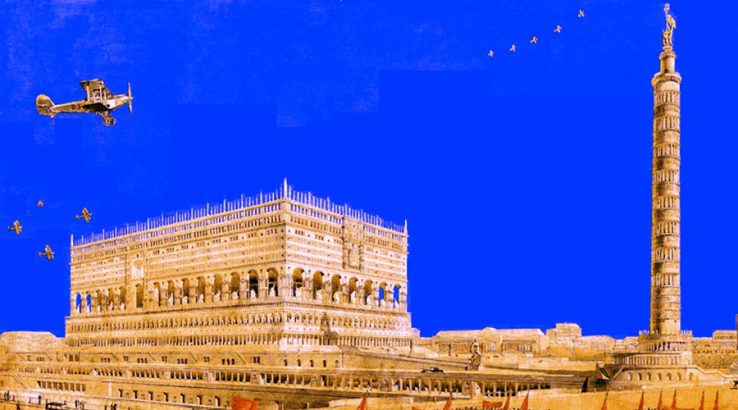
Among the rejected submissions were designs by Armando Brasini, Iofan’s Italian teacher, and such renowned architects as Le Corbusier and Walter Gropius. In all, there were 136 Soviet and 24 foreign submissions.
People’s Commissariat of Heavy Industry
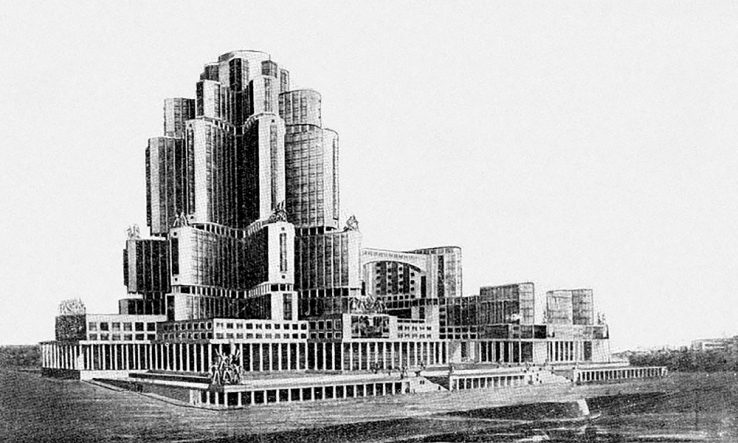
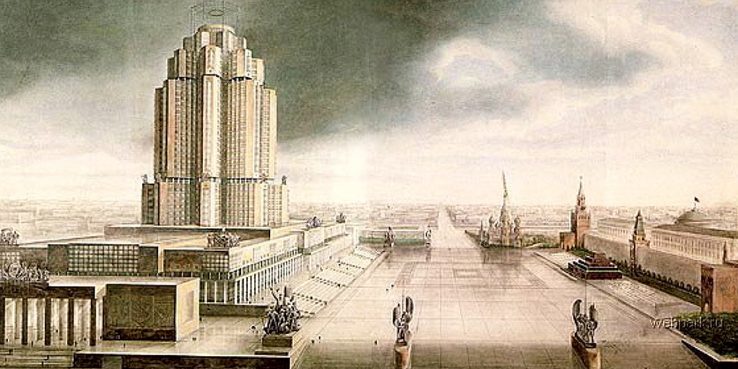
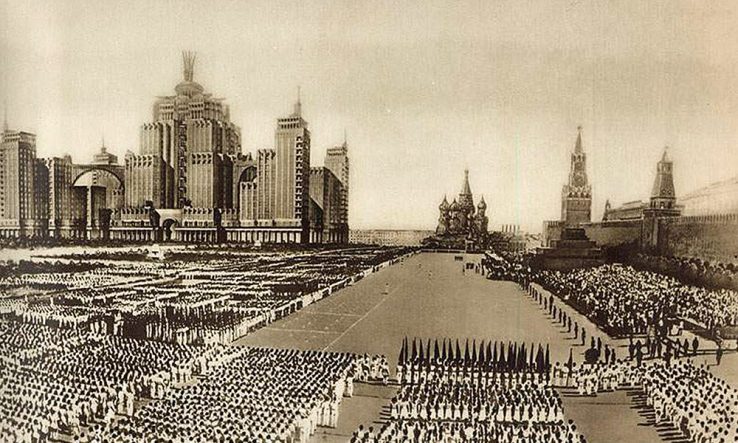
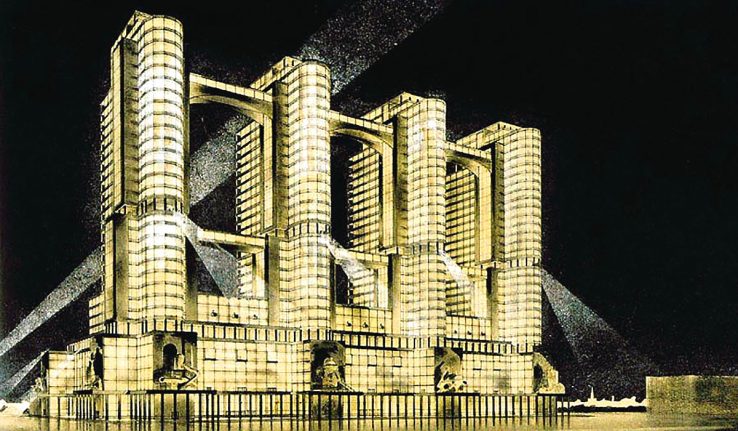
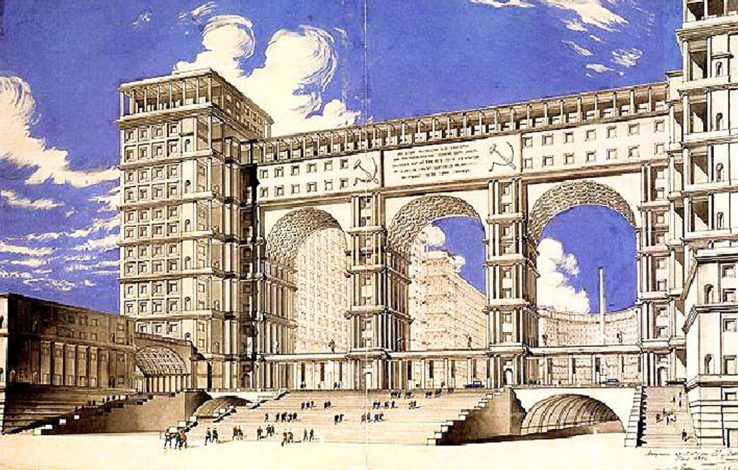
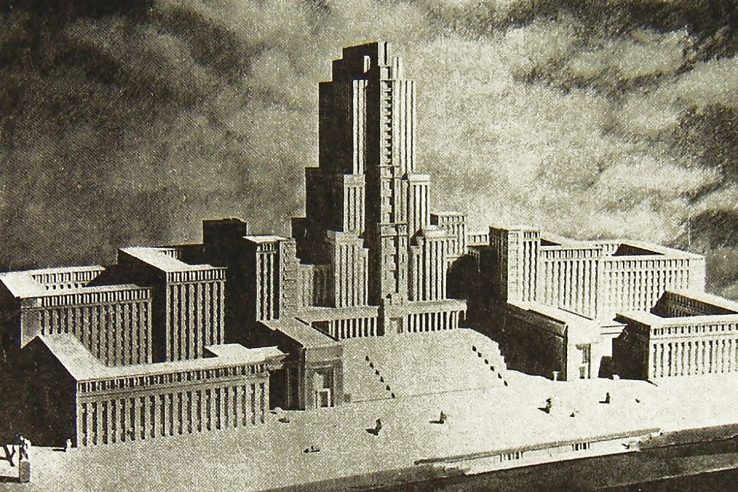
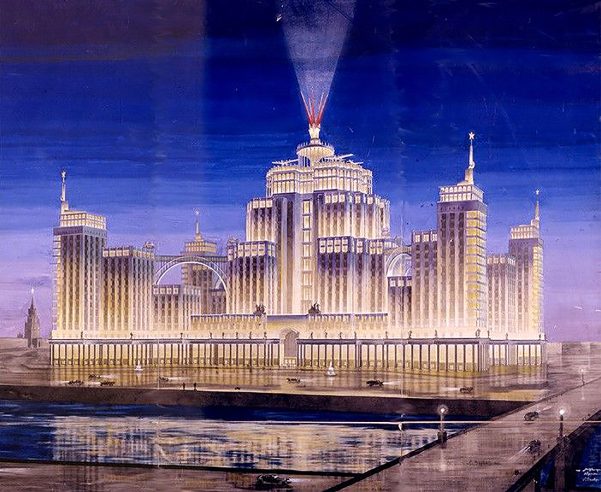
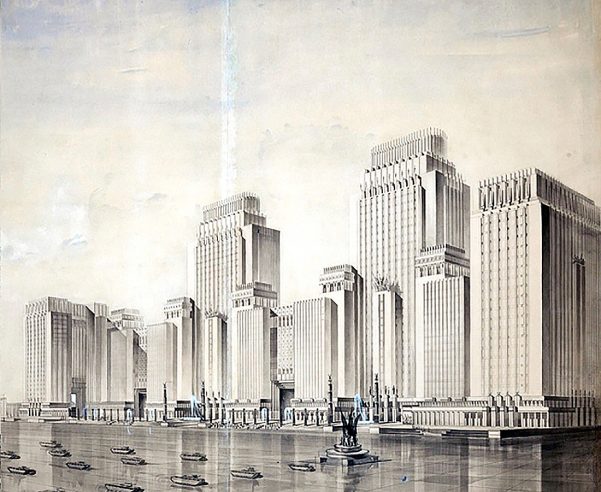
A competition for the design of a building to house the People’s Commissariat of Heavy Industry on Red Square was announced in 1934. Reflecting the important role heavy industry played in Stalin’s modernization of the Soviet Union, the building would have been enormous, dwarfing Saint Basil’s Cathedral and changing the skyline of Moscow.
Twelve entries were submitted, but the building was never realized.
Aeroflot Building
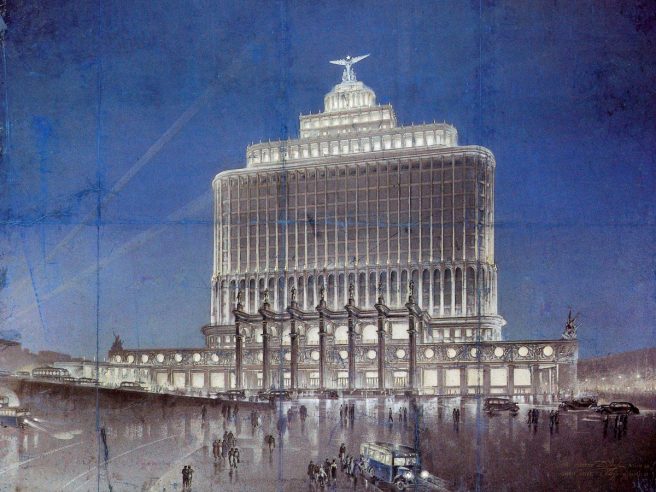
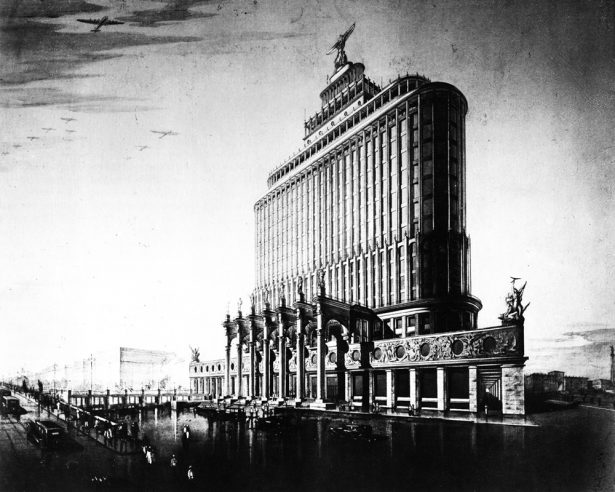
The headquarters of Aeroflot, the Soviet airline, was planned by architect Dmitri Chechulin as a monument to the glory of Soviet aviation. Hence its aerodynamic shape and the sculpted figures of the Soviet airman who took part in the heroic rescue of the Chelyuskin steamship crew from an improvised airstrip on the frozen surface of the Chukchi Sea in 1934.
Izvestia Office Complex
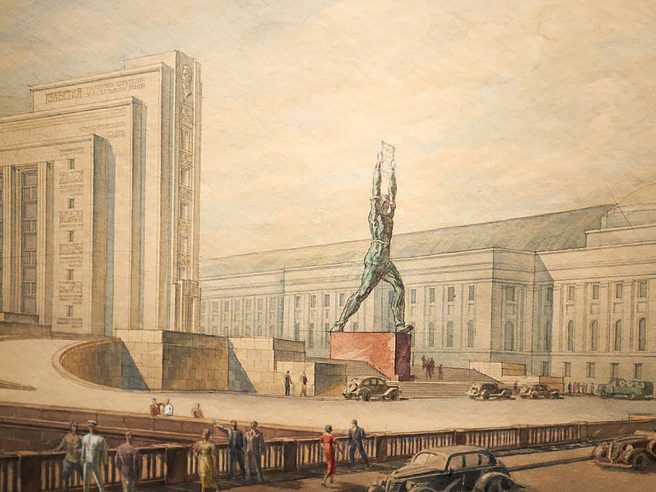
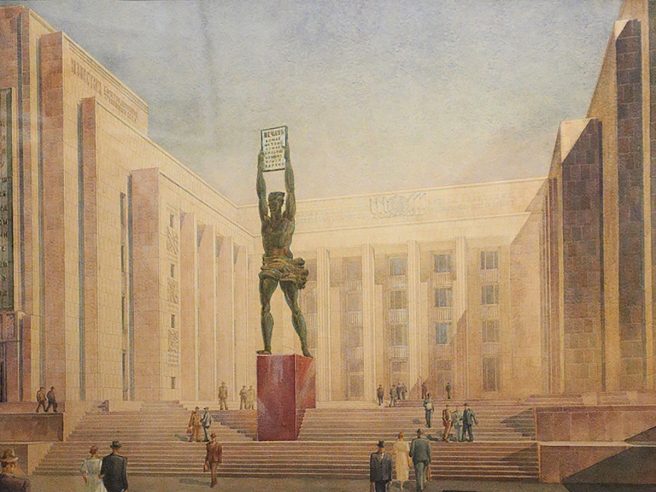
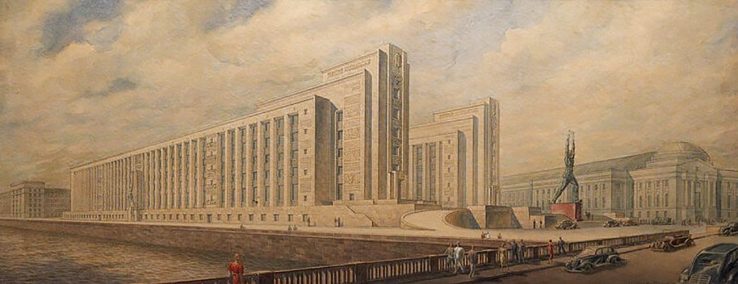
This large office complex was planned for the Izvestia newspaper on the bank on the Moskva River. (The better-known Pravda was the mouthpiece of the ruling Communist Party; Izvestia represented the views of the Supreme Soviet.)
Pantheon
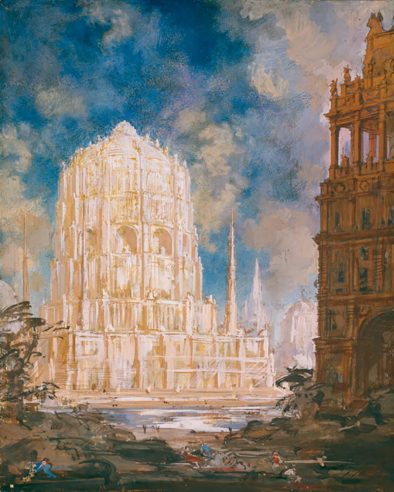
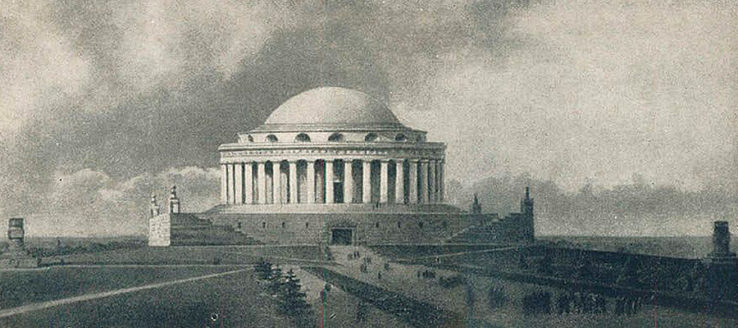
After Stalin’s death, his successors determined to build a Moscow Pantheon, or Monument to the Eternal Glory of the Great People of the Soviet Land. The former dictator would be buried there. The remains of his predecessor, Lenin, were to be transferred from Red Square to the new building as well.
Nothing came of the proposal. Stalin was initially laid to rest in the Lenin Mausoleum. In 1961, his body was removed and buried in the Kremlin Wall Necropolis.
Click here for more of the art of Yakov Chernikhov.
Steampunk Moscow

Malaysian artist Mauro Cerati has created a steampunk version of Moscow. Click here for more of his work.

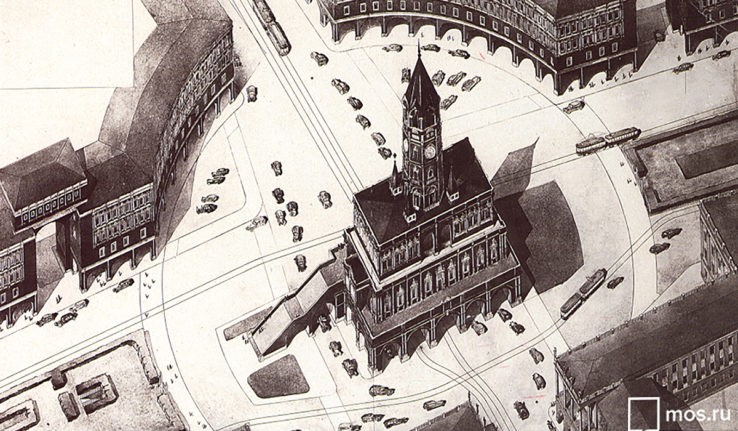

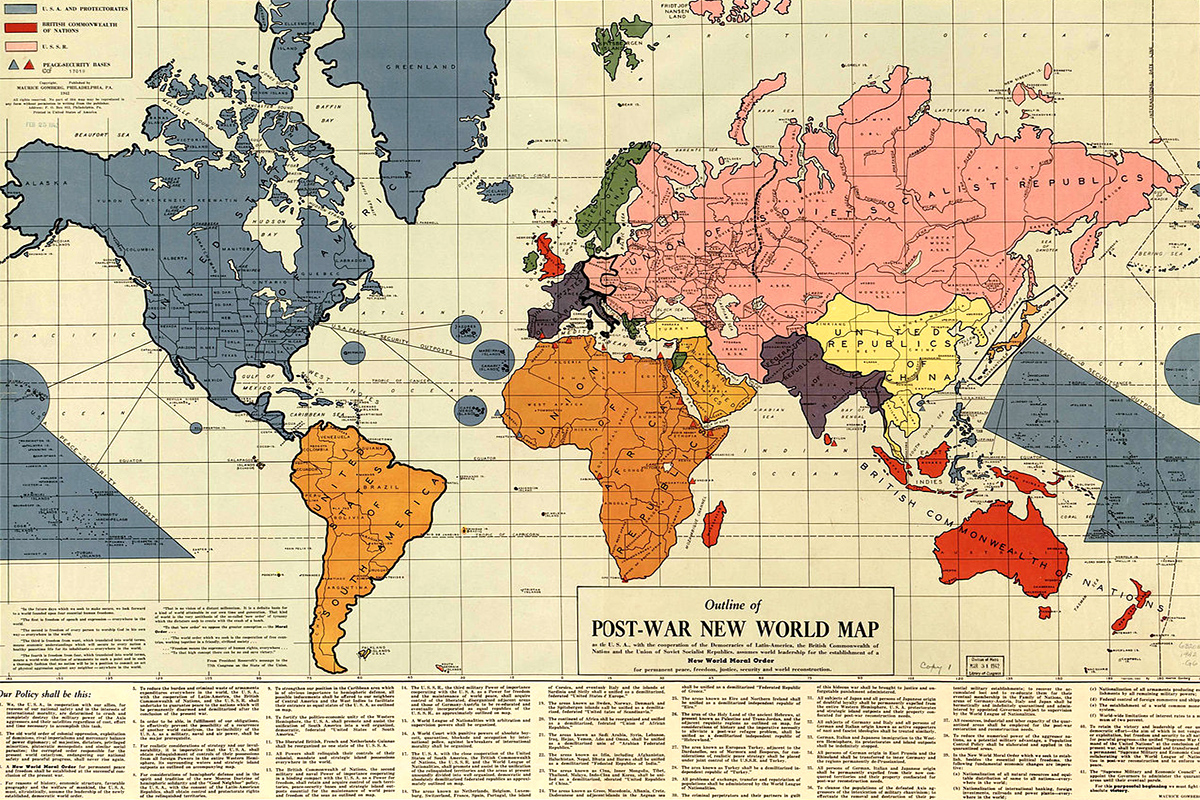
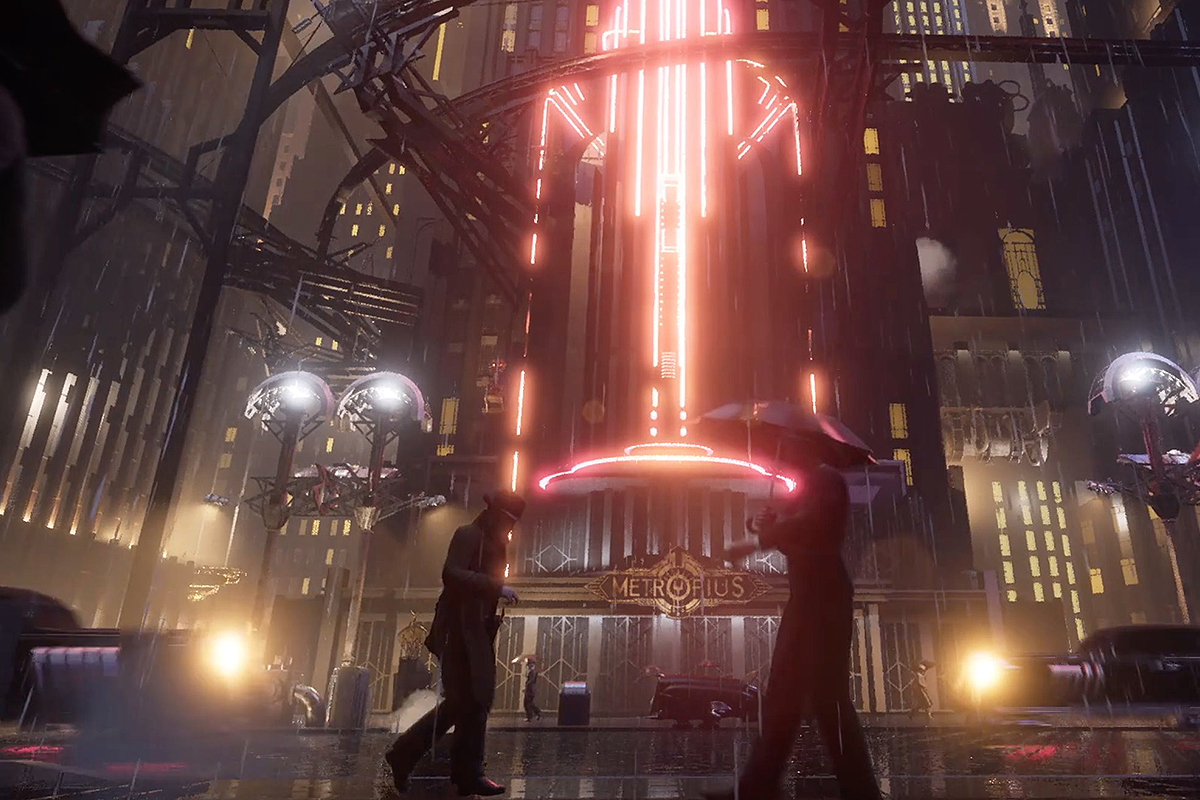
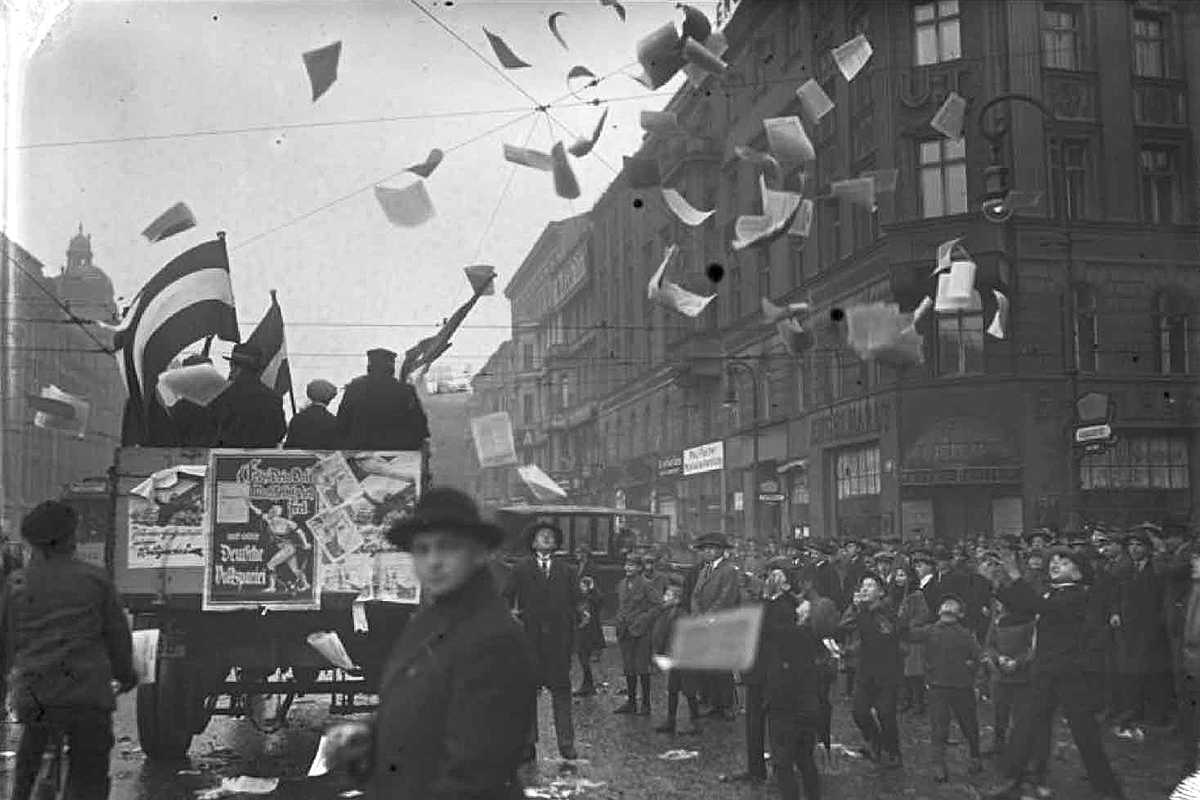
1 Comment
Add YoursI love these “Unbuilt” posts.